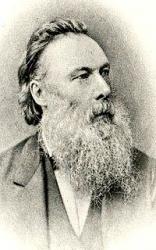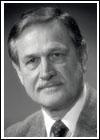Planning worship?
Check out our sister site, ZeteoSearch.org,
for 20+ additional resources related to your search.
- |
User Links
Search Results
Cristo Viene
Author: John R. MacDuff; Pablo Filós Appears in 2 hymnals First Line: ¡Cristo viene! No más guerras Scripture: Hebrews 10:37 Used With Tune: BRYN CALFARIA Text Sources: Poema en castallano
Cristo Viene
BRYN CALFARIA
Appears in 119 hymnals Composer and/or Arranger: William Owen; Carlton R. Young Tune Key: g minor Incipit: 55123 33234 54322 Used With Text: Cristo Viene
BRYN CALFARIA
Cristo Viene
Author: John R. MacDuff; Pablo Filós Hymnal: Himnario Bautista #131 (1978) First Line: ¡Cristo viene! No más guerras Scripture: Hebrews 10:37 Languages: Spanish Tune Title: BRYN CALFARIA
Cristo Viene
Cristo Viene
Author: John R. MacDuff; Pablo Filós Hymnal: Himnario de Alabanza Evangélica #131 (1978) First Line: ¡Cristo viene! No más guerras Scripture: Hebrews 10:37 Languages: Spanish Tune Title: BRYN CALFARIA
Cristo Viene
John R. MacDuff

1818 - 1895 Author of "Cristo Viene" in Himnario Bautista Macduff, John Ross, D.D., second son of Alexander Macduff, of Bonhard, near Perth, was born at Bonhard, May 23, 1818. After studying at the University of Edinburgh, he became in 1842 parish minister of Kettins, Forfarshire, in 1849 of St. Madoes, Perthshire, and in 1855 of Sandyford, Glasgow. He received the degree of D.D. from the University of Glasgow in 1862, and about the same time also from the University of New York. He retired from pastoral work in 1871, lived at Chislehurst, Kent and died in 1887. He has published many practical and devotional works which have attained a wide circulation. In 1857 he was appointed by the General Assembly a member of their Hymnal Committee. His 31 hymns appeared in his Altar Stones, 1853, and were also included with his later poems in his The Gates of Praise, 1876. Of these hymns the following are in common use:—
1. Christ Is coming! Let creation. Second Advent.
2. Eternal Rock! To Thee I flee. (1853.) Christ the Rock.
3. Everlasting arms of love. (1853.) Support in Christ.
4. From Thy habitation holy. Whitsuntide.
5. Hasten, Lord, that morn of glory. Second Advent.
6. Jesus wept! Those tears are over. (1853.) The raising of Lazarus.
7. O do not, blessed Lord, depart. Christ's presence desired.
8. Where shall I look for holy calm. (1853.) Passiontide.
9. Why should I murmur or repine? Resignation.
Of these hymns those dated 1853 are parts only of Dr. Macduff’s originals.
[Rev. James Mearns, M.A.]
-- John Julian, Dictionary of Hymnology (1907)
==============
Macduff, J. R., p. 708, i. Another hymn from his Gates of Praise, 1876, is "Blessed feast! most gracious token" (Holy Communion). He died April 30, 1895.
--John Julian, Dictionary of Hymnology, Appendix, Part II (1907)
==============
http://en.wikipedia.org/wiki/John_Ross_Macduff
John R. MacDuff
William Owen
1813 - 1893 Composer of "BRYN CALFARIA" in Himnario Bautista Owen, William (‘William Owen of Prysgol,’ 1813-1893), musician; b. 12? Dec. 1813 [in Lônpopty], Bangor, the son of William and Ellen Owen. The father was a quarryman at Cae Braich-y-cafn quarry, Bethesda, and the son began to work in the same quarry when he was ten years old. He learnt music at classes held by Robert Williams (Cae Aseth), at Carneddi, and from William Roberts, Tyn-y-maes, the composer of the hymn-tune ‘Andalusia.’ He wrote his first hymn-tune when he was 18 — it was published in Y Drysorfa for June 1841. After the family had [removed] to [Caesguborwen], Bangor, [sometimes called Cilmelyn] — they had spent some years [at Tŷhen] near the quarry — William Owen formed a temperance choir which sang ‘Cwymp Babilon,’ the work of the conductor, at the Caernarvon temperance festival, 1849. In 1852, with the help of some friends at Bethesda, he published Y Perl Cerddorol yn cynnwys tonau ac anthemau, cysegredig a moesol; of this 3,000 copies were sold, A solfa edition appeared in 1886 of which 4,000 copies were sold. He composed several temperance pieces, some of which were sung in the Eryri temperance festivals held at Caernarvon castle. His anthem, ‘Ffynnon Ddisglair,’ and the hymn-tunes ALMA and DEEMSTER became popular, but it was the hymn-tune called BRYN CALFARIA which made the composer famous; this continues to have a considerable vogue in Wales and in England. He married the daughter of the house called Prysgol and went there to live; he also became precentor at Caeathro C.M. chapel. He died 20 July 1893, and was buried in Caeathro chapel burial ground.
--wbo.llgc.org.uk/en/
William Owen


 My Starred Hymns
My Starred Hymns


